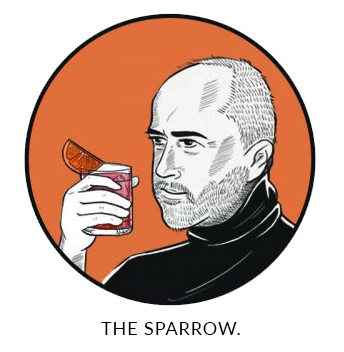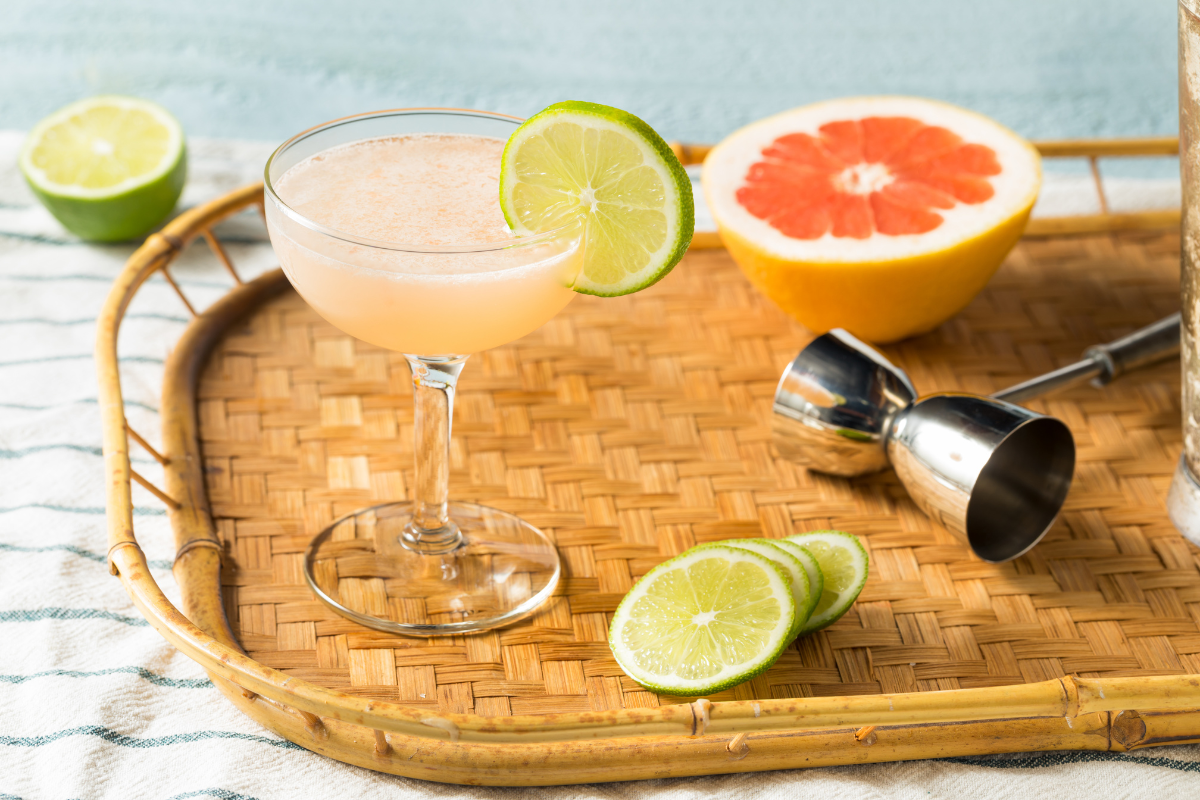The simple ingredients of the Daiquiri make it highly likely it developed in some form in a number of places rather than being invented.
Lemons and then limes were part of a British sailor’s rations from 1795 and it is likely they could have combined this with their daily ration of rum and water, known as “Grog”. However, the most common version of the Daiquiri’s inception and its name comes from the mining engineer, Jennings Cox in 1902. Cox was working for the Spanish-American Iron Company near a village called Daiquiri near Santiago de Cuba – the original home of Bacardi. There are two versions of his invention. One, has him adding lime juice and sugar to the local rum for American guests after his gin ran out and he was concerned about using the rum straight. The other is when another engineer, named Pagliuchi, visits and having nothing else in the cellar than rum, limes and sugar, the drink is born.
The drink grew in popularity from the 1920s but it was the 1940s when it really took off. During the war, many spirits became harder to find in the US due to rationing, but rum was readily available due to Roosevelt’s Good Neighbor Policy that opened up Latin American trade.
TRADITIONAL RECIPE
60mL white rum (preferably Cuban)
30mL lime juice
1 tsp sugar
Put all ingredients into a cocktail shaker with ice. Shake vigorously then strain into a chilled cocktail glass. This is one of the easiest recipe combinations to remember. I tend to use a sugar syrup which translates to half a shot (15ml). Therefore, the measurements are 2 shots of rum, 1 shot of lime and ½ a shot of sugar syrup.
Even I can remember 2, 1 and a half.
Hemingway started visiting El Florida Bar (known as El Floridita) in Havana around 1932 when he was on fishing trips when he lived in Key West. The bartender was the great Constantino Ribalaigua Vert. Known as The Cocktail King of Cuba, Spanish born “Constante” invented over 200 drinks but is most famous for his variations on the daiquiri. His Daiquiri No 3, called the Floridita Special is closest to what has become known as the Papa Doble. Hemingway started to be called Papa during his friendship with Gerald and Sara Murphy (see Villa America Special). The “Doble” part means double and this recipe is basically double the quantities you might normally put in a standard daiquiri.
RECIPE (“Doble”)
120ml white rum
60ml fresh lime juice
60ml fresh grapefruit juice
6 drops of maraschino liqueur
1 tsp sugar (optional)
Put in a blender with ice then serve in a large cocktail glass
Hemingway rarely, if ever, used sugar in his drinks so if you are feeling like doing it like Papa you should perhaps try it without first. To some, it is a little harsh but worth a try.
In Islands in the Stream the main character, Thomas Hudson spends a lot of time in the Floridita where he describes drinking the frozen daiquiri as feeling, “…the way downhill glacier skiing feels running through the powder snow and, after the sixth and eighth, felt like downhill glacier skiing feels when you are running unroped.”
In a letter to friend Harvey Breit in 1952, Hemingway tells of a time he drank a total of 18 double frozen daiquiris in one day at the Floridita. He drank 17 with Guillermo and then one more after Guillermo left. “Each double had 4 ounces (120ml) of rum in it. That makes 68 ounces or rum. But there was no sugar in the drinks and we each ate two steak sandwiches.” He then went home and read all night waking to no hangover – maybe it was the steak sandwiches.
This is one of those “dangerous” cocktails that are very easy to drink but don’t taste alcoholic. Constante always specified Bacardi white rum in his cocktails which helped make the brand famous and I would suggest sticking to that recommendation. When you are starting your journey through classic cocktails, it is best to start with the original recipe. If you want to think outside the box then it is a good idea to start with the box.



